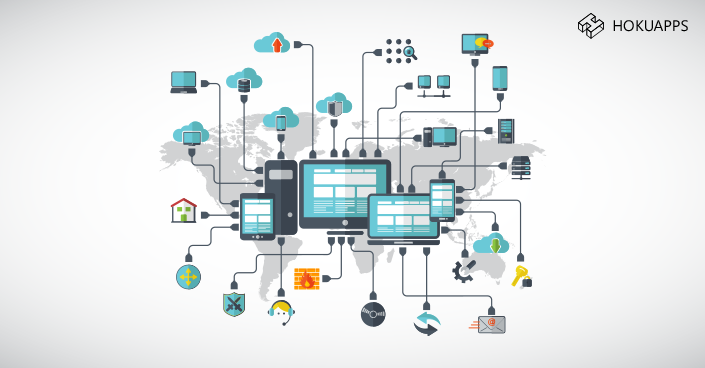- Products
- Solutions
- Services
- Resources
- Customer Success
- Company
- Sign In
- Contact Us

Enterprises are increasingly moving away from the practice of being confined to a single business software provider, including SAP. The trend is to adopt the approach called “Best-of-Breed”, meaning, each application is leveraged to optimize capabilities and enhance cost-effectiveness. Businesses are incorporating SAP Solutions along with other on-demand applications. Maintaining this diversity of software calls for significant amount of time and robust management capabilities to stabilize communication between the application and corresponding solutions. This necessitates SAP integration with non-SAP systems. Automated programming of point-to-point interfaces between SAP and non-SAP solutions eradicates the possibilities of leveraging the benefits that may arise from the best-of-breed. On account of this, it is preferable for companies to use systematic business process integration solutions that accelerate project completion, simplify integration, lower risk, and guarantee that integration solutions are effortlessly maintained without having to compromise on flexibility and adaptability.
The distribution of information across SAP ERP and non-SAP systems is critical for the functioning of day-to-day transactions. For this, SAP integration with non-SAP systems is indispensable. For example, a manufacturing company could use non-SAP systems to streamline its production process and shop floor activities while leveraging SAP ERP Logistics module for Sales, Purchase and Warehouse management. The non-SAP system would not have the apt information about the nature and amount of what is to be produced. This comes under the capabilities of the SAP ERP due to its abilities to forecast demand or due to received orders fed into the system. This data must necessarily be made accessible to the non-SAP system in real time for the production process to be free of obstacles. Similarly, data from non-SAP systems (such as production and inventory details) must flow to SAP ERP software for it to yield optimal variables and processes geared for the highest levels of performance and output. For such reasons, it is imperative that SAP integration with non-SAP systems must be executed with speed.

The following are tips to assist with selecting the right technology for SAP integration with non-SAP systems:
The idea of manually programming the interface between an SAP with non-SAP application appears to be simple at the first look. However, a direct connection to achieve SAP system integration can cause major problems. Point-to-point integration breeds confusion and generates an integration platform that results in maintenance issues. Enterprise applications become dependent on each other which creates integration scenarios vulnerable to risk and instability. Hence, it is advisable to focus on integrating technology that is loosely coupled. This provides the option to include a wide range of architectural approaches and topologies ranging from the hub and spoke model to ESB to SOA. All in-house software solutions should ideally be loosely coupled to the integration structures in order to prevent fragile direct data connections between applications. For instance, in a hub-and-spoke structure, neat star topologies are created. If changes are made to one application, the other connections remain unaffected. If integrated otherwise, the enterprise must deal with a topology whose structure resembles spaghetti and is compromised with regard to its agility as a direct consequence of lack of maintenance.
The use of standard application and technology connectors for SAP integration with non-SAP systems is recommended over custom-coded interfaces. This mitigates dangers associated with risky manual programming. An integration vendor that provides and maintains components for SAP provides stupendous benefits for a business by eradicating the need to manually construct the connectors. Manual programming tends to be lengthy and risk-prone. Components designed for SAP will draw in the advantages provided by BAPI, RFC and IDOC standards.
It is preferable to approach SAP integration with non-SAP systems with a method that allows configuring a component provided by an integrated software suite. The best practices in software integration utilize standard application and technology components that allow users to leverage the work of others. Consequently, one can focus on the core competencies of a business instead of concerning oneself with the low-level aspects of software integration.
Including a business process monitor in SAP integration with non-SAP systems enables effective monitoring and error handling – a role that is mission critical. In case of lag of Interoperability, it adversely impacts the overall performance of the company. Hence, interfaces connecting the solutions need effective monitoring. Once the integration project is designed, the monitoring process should be built-in and open to the configuration. It is recommended not to put additional effort to monitor the system. It should be configurable in a way that the key information is displayed in dashboard views. Viewers should be able to decide on the data that is placed in the log as an attachment.
It is important to include the ability to visually model business processes and their supporting integration processes in SAP integration with non-SAP systems. This enables both stakeholders and IT managers to monitor and make decisions concerning SAP and non-SAP integration. Process and flow visualization also enable multi-disciplinary communication and clear conceptions of elements of the necessary integration model. Consequently, the selected integration technology for SAP integration with non-SAP systems should employ a graphical user interface capable of visualizing processes and make them usable for both technical and non-technical users.
Most businesses deploy a heterogeneous software integration landscape for SAP integration with non-SAP systems. Integration solutions must necessarily be connected to IT environments, which are often disparate aspects of business processes.
SAP integration with non-SAP systems should be platform-independent. It should integrate seamlessly with SAP as well as deal with options for interoperability with Web or mobile. To understand this, refer to the earlier point regarding connectors: the integration system should provide connectors for all relevant IT operations enabling their integration in a platform-independent manner. It is advisable to choose an integration vendor for SAP integration with non-SAP systems, that deploys the latest technology, as this demonstrates their willingness to provide connectors for future versions as well.
For establishing a maintainable and stable integration project for SAP integration with non-SAP systems, self-documenting integration processes assists significantly. Inefficient documentation capabilities of an integration project can lead to mission-critical project information being lost. This can happen especially in the event of employees shifting to other assignments or jobs. However, the documentation process for SAP integration with non-SAP systems is often annoying, tedious, and time-consuming. Hence, professionals are likely to select an integration solution that is self-documenting. In this case, they are also likely to add pertinent notes, whether it be related to business or technical concerns.
Notwithstanding the uniqueness of business processes, there are similarities that can be leveraged in SAP integration with non-SAP systems. For instance, invoicing processes are broadly similar in many companies and they require the same solutions. A mature integration technology for SAP integration with non-SAP systems provides the privilege of having experienced such business processes earlier. New solutions do not need to be devised with each problem. Past experienced collected by the integration vendor will provide “quick wins” that both line-of-business and IT managers rely on for continued executive-level support.
It is recommended that, for SAP integration with non-SAP systems, a business chooses a vendor that is experienced and a well-known entity in the SAP ecosystem. However, the establishment of a technology supplier in an ecosystem is another matter entirely. A prospective user should verify that a provider for SAP integration with non-SAP systems is experienced in technology integration in the SAP environment.

The HokuApps development team have the proven skills to construct bespoke integrations to SAP. Its ability to maintain integration and have them supported by a single vendor on a subscription basis. This affords companies a financial advantage, allowing them to diversify the cost of integration while achieving SAP integration with non-SAP systems.
Selecting HokuApps as your SAP integration solution will result in gaining efficiency on one hand, and facilitating savings in multiple areas. This flexible pricing model can be adapted according to the specific integration needs of a business in accordance with its budgets and demands.